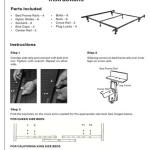How to Make a Tiered Garden Bed on a Slope
Gardening on a slope can present unique challenges, but it also offers an opportunity to create a visually appealing and functional garden. A tiered garden bed, also known as a terraced garden, is an excellent solution for maximizing space and creating a stable growing environment on an incline. This article will provide a detailed guide on how to build a tiered garden bed on a slope, outlining the necessary steps and materials.
Before embarking on this project, it is crucial to understand the slope's angle and the type of soil present. A gentle slope will require less complex construction than a steep incline. Similarly, soil conditions will influence the stability and drainage of your tiers. Consulting with a landscape professional or a local expert can provide valuable insights and guidance specific to your site.
Step 1: Planning and Design
The first step is to determine the size and layout of your tiered garden bed. Consider the type of plants you wish to grow, the available space, and the overall aesthetic you envision. It is recommended to start with a simple design and gradually expand if needed. Draw a sketch of the proposed tiers, indicating their dimensions, materials, and potential plant locations.
When designing your tiered garden bed, consider the following factors:
- Slope Angle: A steeper slope will require more tiers and potentially different support structures than a gentler slope.
- Plant Needs: Different plants have varying soil and sunlight requirements. Choose plants that thrive in the conditions offered by each tier.
- Access and Maintenance: Ensure the tiers are accessible for planting, watering, and harvesting.
- Aesthetic: Consider the overall design of your garden and integrate the tiered bed seamlessly.
Step 2: Site Preparation
Once the design is finalized, prepare the site for construction. This involves clearing the area of vegetation, debris, and rocks. Remove existing topsoil, as it may be too compact for proper drainage in a tiered garden. Ensure the area is level and compacted to provide a firm foundation for the tiers.
Additionally, consider installing a drainage system to prevent waterlogging. This could involve a series of drainage pipes or a gravel layer beneath the tiers.
Step 3: Construction
The construction of the tiers involves creating retaining walls that hold the soil in place. There are several materials suitable for constructing tiered garden beds, including:
- Timber: Durable and aesthetically pleasing, but requires regular treatment for longevity.
- Stone: Natural and long-lasting, offering a rustic charm.
- Concrete Blocks: Affordable and sturdy, providing a modern look.
- Gabions: Wire cages filled with stone, offering a robust and visually appealing option.
Start by laying out the first tier at the bottom of the slope. Ensure the base is level and stable. Build the retaining wall using your chosen material, making sure each tier has a slight angle to encourage drainage. Repeat this process for each subsequent tier, ensuring proper spacing and alignment between the tiers. Secure the structures with stakes, anchors, or concrete footings to prevent movement.
Step 4: Backfilling and Planting
Once the tiers are constructed, backfill them with suitable soil. Amend the soil with compost, organic matter, and fertilizer to improve drainage, aeration, and nutrient content. Plant the chosen species in their respective tiers, ensuring sufficient spacing for growth and access to sunlight.
Consider using a drip irrigation system to provide efficient and controlled watering. A drip system delivers water directly to the plant roots, minimizing waste and promoting healthy growth.
Step 5: Maintenance
Regular maintenance ensures the longevity and productivity of your tiered garden bed. This includes:
- Watering: Water regularly, especially during dry periods, to keep the soil moist.
- Weeding: Remove weeds promptly to prevent competition for nutrients and sunlight.
- Fertilizing: Apply fertilizer as needed to provide essential nutrients for plant growth.
- Inspection: Regularly check the tiers for signs of erosion, damage, or drainage issues.
- Pruning: Prune plants as necessary to maintain shape and encourage healthy growth.
Creating a tiered garden bed on a slope requires planning, patience, and attention to detail. By following these steps, you can transform a challenging landscape into a beautiful and productive garden space.

How To Build An Organic Raised Bed On A Sloped Yard Deeply Southern Home

How To Build A Tiered Garden On Slope

How To Build An Organic Raised Bed On A Sloped Yard Deeply Southern Home

Raised Bed Vegetable Garden On A Slope Gardening Healthy Alyona

Raised Bed Vegetable Garden On A Slope Gardening Healthy Alyona

The Sage Erfly How We Built Our Tiered Raised Bed Vegetable Garden On A Slope

How To Build A Terraced Garden Bed On Slope

How To Build An Organic Raised Bed On A Sloped Yard Deeply Southern Home

How To Build An Organic Raised Bed On A Sloped Yard Deeply Southern Home

How To Build A Tiered Garden On Slope In 6 Steps







